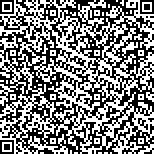|
| 2009-2019年江苏省肿瘤登记地区卵巢癌发病趋势及年龄变化特征 |
| Trends of Incidence and Age at Onset for Ovarian Cancer in Cancer Registration Areas of Jiangsu Province from 2009 to 2019 |
| 投稿时间:2025-01-03 修订日期:2025-04-08 |
| DOI: |
|
 |
| 中文关键词: 卵巢癌 发病率 趋势分析 年均变化百分比 发病年龄 |
| 英文关键词:Ovarian cancer, Incidence rate, Trend analysis, Average annual percentage change, Age of onset |
| 基金项目: |
|
| 摘要点击次数: 99 |
| 全文下载次数: 0 |
| 中文摘要: |
| [目的] 分析2009-2019年江苏省卵巢癌发病率和发病年龄变化趋势。 [方法] 基于江苏省16个肿瘤登记处上报的2009-2019年肿瘤登记数据,利用Joinpoint软件计算卵巢癌发病率及其中标率、年龄别发病率、60岁及以上发病构成等指标的平均年度变化百分比及其95%可信区间,通过线性回归模型计算平均发病年龄和标化平均发病年龄的变化趋势。结合病例出生和发病年份构建1929-2019年出生队列,分析不同年份出生的同年龄组人群的卵巢癌发病变化趋势。[结果] 江苏省卵巢癌发病率(AAPC=4.18, P<0.05)和中标率(AAPC=2.11, P<0.05)均呈现明显上升趋势。各年度城市卵巢癌的发病中标率高于农村,但期间农村地区卵巢癌发病中标率呈明显上升趋势(AAPC=4.85,P<0.05),而城市地区变化不明显。卵巢癌发病率随着年龄增加呈现先升高后下降的趋势,发病高峰为60-69岁年龄组。2009-2019年各年龄组发病趋势不一,但50岁以上各年龄组均呈现上升趋势且年龄越大年均增幅越明显。2009-2019年江苏省卵巢癌的平均发病年龄和标化平均发病年龄均呈明显升高趋势,年均增幅分别为0.57岁和0.38岁(P<0.05)。城市和农村地区平均发病年龄均呈明显上升趋势,且城市升高幅度高于农村;但调整人口构成后农村地区变化不明显。与2009年相比,2019年江苏省卵巢癌的年龄别发病构成呈后移趋势;其中60岁以上人群卵巢癌的中标发病构成呈明显上升趋势(AAPC=2.78,P<0.05)。[结论] 2009-2019年江苏省卵巢癌发病率呈现上升趋势,但农村上升幅度高于城市,卵巢癌平均发病年龄后移,老年发病占比增加。 |
| 英文摘要: |
| [Purpose] To analyze the incidence trend and age at diagnosis of ovarian cancer in cancer registration areas of Jiangsu Province from 2009 to 2019. [Methods] Based on data reported by 16 cancer registry county in Jiangsu Province, we calculated the average annual change percentage(AAPC) and its 95% confidence interval(CI) of ovarian cancer crude rate(CR), age-standardized incidence rate by Chinese standard population(ASIRC), proportion of cases in people over 60 years of age by Joinpoint software. The linear regression model was used to calculate the trend of the mean age of onset and the standardized average age of onset. The birth cohort from 1929 to 2019, to analyze the change trend of ovarian incidence rate among people born in different periods. [Result] The crude incidence rate(AAPC=4.18, P<0.05) and age-standardized incidence rate(AAPC=2.11, P<0.05) of ovarian cancer from 2009 to 2019 showed a significant increasing trend(P<0.05). The crude incidence rate of ovarian cancer in urban areas was always higher than that in rural areas, but the incidence rate of ovarian cancer in rural areas showed a significant upward trend (AAPC=4.85, P<0.05), while there was no significant change in urban areas. The incidence of ovarian cancer first increased and then decreased with age, and the peak age group was 60-69. From 2009 to 2019, the incidence trend of different age groups varied, but the age group over 50 years old showed an upward trend, and the upward trend became more obvious as age increased. From 2009 to 2019, the crude mean age at onset and the standardized mean age at onset in Jiangsu Province showed a significant upward trend, with an average annual increase of 0.57 years and 0.38 years, respectively (P < 0.05). The average age of onset in both urban and rural areas showed a significant upward trend, and the annal increase in urban areas was higher than that in rural areas. However, there is no obvious change in rural areas after adjusting the population composition. Compared with 2009, the standardized age proportion of ovarian cancer in Jiangsu Province in 2019 showed a backward trend. Standardized proportion of ovarian cancer among people over 60 years old showed a significant upward trend (AAPC=2.78, P<0.05). [Conclusion] From 2009 to 2019, the incidence rate of ovarian cancer in Jiangsu Province showed an upward trend. Compared with urban areas, the increase in rural areas was more pronounced. The average age at onset of ovarian cancer has shifted later, and the proportion of cases occurring in older individuals has increased. |
|
在线阅读
查看/发表评论 下载PDF阅读器 |
|
|
|